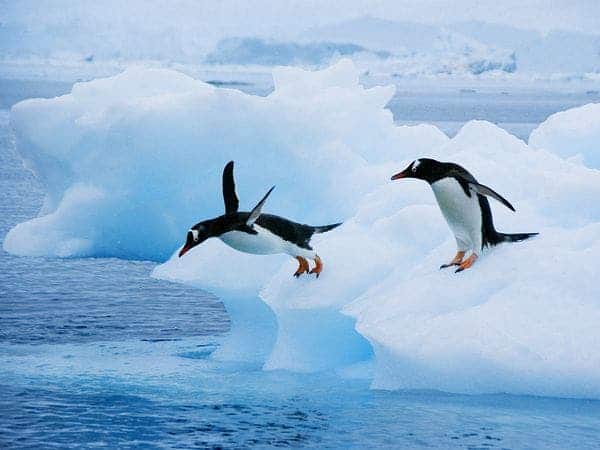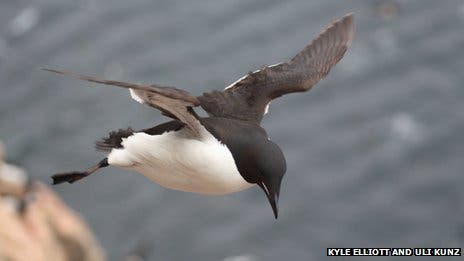
This little fellow on the left might look like he’s about to take off for a flight, but he knows better. (c) National Geographic
Penguins are remarkable animals that have always garnered attention. For one they’re extremely cute (always an advantage in a world where humans are at the absolute top of the food chain), then they’re extremely fascinating to study. If you’re to closely look at the wings of a penguin, intuition would immediately tell you that these robust birds have no chance whatsoever of taking off with those puny things and you would not be mistaken.
Penguins, however, travel across massive distances over land, during their migration from feeding to breeding grounds. While some birds choose to take the easy route and just fly over, penguins go through the hurdles of crossing through sharp stones, extreme cold and over vast distances with only a pair of tiny legs, which, let’s admit, aren’t quite the fastest in the animal kingdom. Why not evolve flight then? To answer this question, a team led by biologist Kyle Elliott at the University of Manitoba in Winnipeg, Canada, examined two species of diving seabirds, closely related to the penguin, that still have some ability to fly. Their findings show that at some point in their evolutionary history, penguins might have actually had flight capable wings, but evolution has a way of choosing what’s best in terms of energy and simply put there’s only so much to spare. Either you’re good at diving or you’re good at flying. You can’t have both – the penguin chose to dive and it’s a fantastic swimmer to boost as well!
Professor John Speakman, from the University of Aberdeen and the Chinese Academy of Sciences, said: “Like many people, I’ve always been interested in penguins, and seeing them do these phenomenal marches across the ice, I’ve often thought: ‘Why don’t they just fly?’
“And it’s really great to be involved in the group of people that have solved it.”

Murres are well adapted to diving but when it comes to flying their wings are some of the most energetically inefficient. The birds are close relatives to penguins, and with their black and white feathering, they even resemble penguins. (c) KYLE H. ELLIOTT
The researchers closely studied the pelagic cormorant (Phalacrocorax pelagicus), a species that propels itself underwater with webbed feet, and the thick-billed murre (Uria lomvia), which flaps its wings underwater to swim. Various specimens from each species were captured and had monitoring equipment installed, from recorders that measured the time of dives as well as depth and temperature, to injected isotope-tagged water that can tell researchers how much carbon dioxide and water vapour the birds had expelled or how much energy was expended for diving and flying.
It’s all about energy
They found that both cormorants and murres must spend exceedingly large amounts of energy to fly — the highest known among all flying birds. When it came to diving, the energy costs for the foot-propelled cormorants were much higher than expected for a similarly sized penguin. The wing-propelled murres had diving costs lower than those of cormorants, but still 30% greater than those experienced by penguins of the same size. Basically, since the birds can both dive and fly, they aren’t really very good at either.
“The energy costs are very very high. These birds have these very short wings and they have to beat them at an incredible speed to stay in the air. It is exhausting for them.”
The birds, according to the researchers, are veritable evolutionary tipping points between seabirds that can fly and dive, and those that are flightless.
Prof Speakman explained: “Basically the hypothesis is that as the wings became more and more efficient for them to dive, they became less and less efficient for them to fly.
“At some point it became so ‘expensive’ for them to fly, that it was better to give up flying altogether and make the wings into small flippers.”
The study was published in the journal Proceedings of the National Academy of Sciences..









